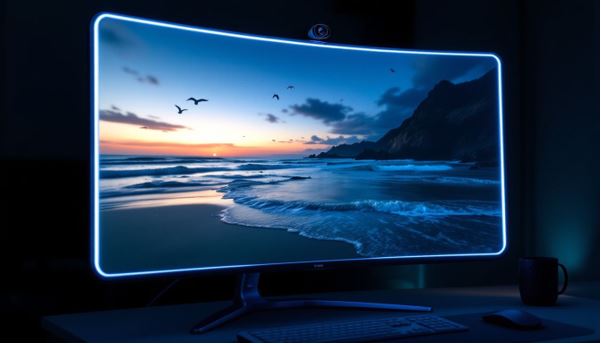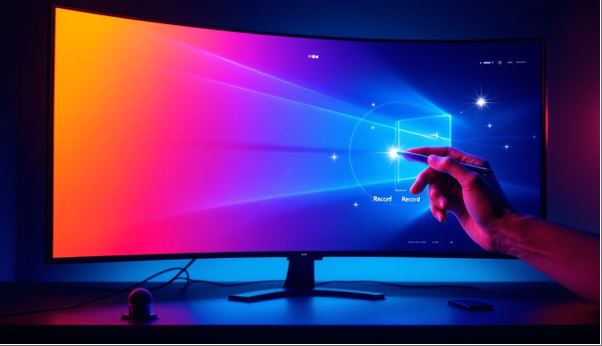Screen recording has transformed digital communication, with research showing that 85% of businesses now rely on these tools for training and documentation. Professional screen recording website enable users to capture every aspect of their screen activity – from cursor movements to system sounds – with remarkable precision. Whether you’re developing software tutorials, tracking system issues, or creating educational materials, these tools provide everything needed for effective digital communication.
Industry data reveals that video demonstrations are 72% more effective at teaching technical skills compared to traditional written documentation. This comprehensive guide explores how to leverage screen recording effectively, covering everything from tool selection to advanced recording techniques.
What is screen recording?
Screen recording technology captures real-time digital activity on your computer, tablet, or smartphone screen. This versatile tool transforms complex explanations into clear visual demonstrations. Modern screen recording has revolutionized how we share knowledge and information across various fields.
The applications of screen recording span across numerous professional and personal uses:
- Creating detailed software tutorials
- Recording virtual meetings and presentations
- Documenting technical issues and bugs
- Developing engaging product demonstrations
- Capturing online course content
- Recording webinars and training sessions
- Creating social media content
- Documenting workflow processes
“Screen recording bridges the gap between complex technical concepts and clear understanding, making it an essential tool in today’s digital workplace.”
Getting started with screen recording
Built-in options
Most modern operating systems provide integrated screen recording capabilities. Windows users can access the Xbox Game Bar through Win + G, offering basic recording features suitable for beginners. Windows 11 users benefit from the enhanced Snipping Tool for quick captures. Mac users have QuickTime Player, which provides robust recording capabilities, including system audio capture and basic editing features. Mobile devices, both iOS and Android, include native screen recording functions accessible through quick settings panels.
Online screen recorders
Web-based recording solutions offer advanced features without installation requirements. These platforms have transformed how we approach screen recording, providing sophisticated tools accessible through any modern browser. They typically include real-time editing capabilities, cloud storage integration, and cross-platform compatibility.
Essential recording tips
Before recording
Proper preparation ensures professional results. Consider your recording environment, technical requirements, and content organization. Test all equipment and connections before starting any important recording session. Planning prevents common issues and reduces the need for re-recording.
Essential preparation checklist:
- Organize your desktop environment
- Remove confidential information from view
- Close unnecessary applications
- Test audio equipment
- Plan your recording sequence
- Check available storage space
- Verify internet connection stability
- Set up proper lighting for webcam recordings
During recording
Maintain quality throughout your recording session by focusing on consistent delivery and technical execution. Monitor your recording parameters and adjust as needed. Pay attention to pacing and clarity, ensuring your audience can follow along easily.

Common problems and solutions
Audio issues
Audio problems can compromise recording quality. When no sound is recording, verify microphone permissions and check system audio settings. Test microphone input levels and confirm the correct audio source selection. For background noise issues, consider your recording environment and equipment quality.
Video quality concerns
Professional video quality requires attention to technical details and system performance. Consider these common solutions:
- Set appropriate resolution (1080p recommended)
- Close resource-intensive applications
- Enable hardware acceleration
- Maintain sufficient storage space
- Update graphics drivers
- Monitor system resources
Sharing and saving options
Modern screen recording platforms have revolutionized how we distribute and store content. Select platforms that align with your sharing needs and audience preferences. Consider security requirements and access restrictions when choosing sharing methods.
Best practices for specific uses
For marketers
Create compelling content that drives engagement without sacrificing quality or professionalism. Focus on clear communication and value delivery. Your content should align with broader marketing strategies while maintaining accessibility and engagement.
Key marketing considerations:
- Keep demonstrations concise (3-5 minutes)
- Highlight key features clearly
- Include strong calls-to-action
- Maintain brand consistency
- Use professional transitions
- Add captions for accessibility
For general users
Personal recordings require attention to clarity and organization. Focus on creating content that serves its intended purpose effectively. Consider your audience’s technical capabilities and viewing environment when planning your recordings.
Advanced tips for professional results
Recording environment setup
Create an optimal recording environment that supports consistent, high-quality output. Consider both technical and physical aspects of your recording space. Invest in appropriate equipment and maintain organized workspaces for efficient recording sessions.
Post-recording enhancement
Professional recordings often benefit from thoughtful post-production work. Consider these enhancement opportunities:
- Add branded intros and outros
- Include chapter markers for navigation
- Apply subtle background music
- Create custom thumbnails
- Add closed captions
- Optimize file compression
Time management strategies
Optimize your recording workflow through systematic planning and execution. Develop consistent procedures that support efficient content creation. Establish reliable backup systems to protect your work and maintain production schedules.
Conclusion
Screen recording has evolved from a specialized tool to an essential skill in our digital toolkit. By following these comprehensive guidelines and practicing regularly, you’ll create professional-quality recordings that effectively communicate your message. Start with basic tools, master the fundamentals, and gradually explore advanced features as your needs grow.
Remember: Success in screen recording comes from proper preparation, appropriate tool selection, and consistent practice. Whether you’re creating educational content, product demonstrations, or personal tutorials, these principles will help you achieve your communication goals effectively.




